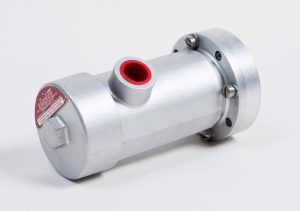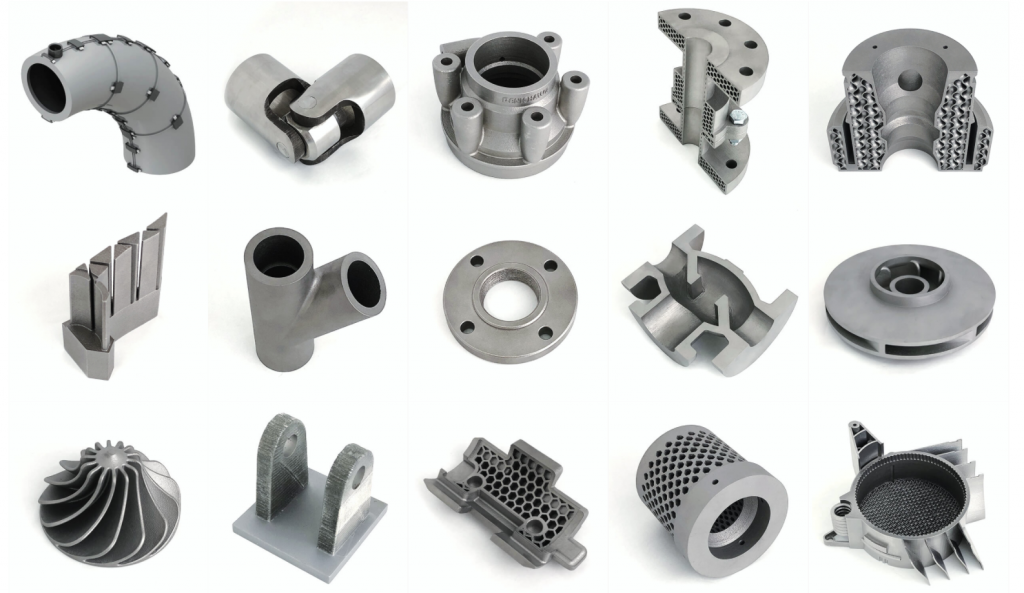Exploring the Versatile Utilizes and Applications of Aluminum Castings in Modern Industries
Aluminum castings have actually come to be indispensable to numerous modern-day sectors as a result of their one-of-a-kind properties. They supply significant advantages in weight decrease, thermal conductivity, and deterioration resistance. From auto developments to applications in customer products and building and construction, their flexibility is amazing. The true extent of their influence expands past immediate advantages, hinting at more comprehensive ramifications for sustainability and efficiency. What exists in advance for aluminum spreadings in an ever-evolving industrial landscape?
Automotive Industry Innovations
The auto market has actually significantly accepted light weight aluminum spreadings to enhance lorry performance and efficiency. By utilizing light weight aluminum, makers can produce lighter parts, which add to enhanced fuel economic situation and lowered emissions. Trick applications include engine blocks, transmission instances, and structural parts, where the product's strength-to-weight ratio delivers durability without including excess weight.
Light weight aluminum castings likewise provide exceptional thermal conductivity, which aids in much better warm dissipation, thus enhancing engine performance. Moreover, improvements in casting technologies, such as die spreading and sand spreading, allow the manufacturing of complex geometries, permitting innovative styles that maximize space and performance.
The recyclability of aluminum lines up with sustainability objectives in the automotive industry, advertising eco-friendly practices. As the sector proceeds to introduce, making use of light weight aluminum spreadings is likely to broaden, driving further innovations in car layout and effectiveness.
Aerospace Advancements and applications
While the aerospace industry continues to prioritize weight reduction and fuel effectiveness, aluminum castings have become an important product selection for different applications. Their lightweight nature, coupled with high strength-to-weight ratios, allows for significant improvements in aircraft performance and efficiency. Light weight aluminum spreadings are frequently made use of in architectural parts, such as body frameworks and wing parts, where decreasing weight is vital.
Current developments in aluminum spreading innovations, including boosted alloy formulas and precision spreading techniques, have actually additionally enhanced the product's efficiency abilities. These advancements allow the manufacturing of complicated geometries and intricate styles while preserving architectural stability. Furthermore, aluminum's excellent deterioration resistance warranties durability and integrity in rough aerospace atmospheres.
As the aerospace sector significantly embraces sustainability, light weight aluminum castings use a recyclable service that aligns with environment-friendly methods, making them a crucial element in the development of next-generation aircraft.
Durable Goods and Everyday Products
As customers increasingly look for light-weight yet resilient products for everyday products, light weight aluminum castings have gained popularity in different consumer goods. The one-of-a-kind buildings of aluminum, including its resistance to rust and superb thermal conductivity, make it a perfect selection for things like cookware, house appliances, and exterior gear. Aluminum cast pots and frying pans offer also warm circulation, boosting cooking efficiency. Additionally, making use of light weight aluminum in items such as bicycle frames and luggage ensures a balance between stamina and transportability. Manufacturers appreciate aluminum castings for their adaptability, as they can be quickly formed right into complicated forms while preserving architectural stability. The capability to recycle aluminum without degrading its residential or commercial properties aligns with expanding customer preferences for lasting items. Overall, light weight aluminum castings are important to the manufacturing of long lasting, useful, and aesthetically pleasing durable goods, fulfilling the needs of contemporary way of livings.
Building And Construction and Architectural Uses
Aluminum spreadings have become an important component in building and construction and building style, especially due to their toughness and lightweight nature. These residential or commercial properties make light weight aluminum a suitable option for different applications, including structural aspects, exteriors, and ornamental features - Wisconsin Aluminum Foundry. Engineers and building contractors progressively utilize light weight aluminum spreadings for window structures, doors, and roof, improving both performance and appearances. The product's resistance to rust better prolongs its lifespan, lowering maintenance prices and making sure sturdiness in diverse ecological conditions
Moreover, light weight aluminum can be easily built into intricate layouts, enabling for cutting-edge architectural expressions. Its convenience helps with the development of personalized items that meet particular style demands, from luxuriant railings to complex supports. As sustainability ends up being a concern, aluminum's recyclability includes in its charm in eco-friendly building methods. Generally, light weight aluminum spreadings are changing the building and construction industry by providing lightweight, resilient, and aesthetically appealing services.
Electrical and Digital Components
Aluminum spreadings play a necessary duty in the manufacturing of lightweight electric rooms, which boost portability and efficiency in various applications. On top of that, their exceptional thermal conductivity makes them excellent for heat sinks, guaranteeing peak performance and longevity of digital parts. In addition, light weight aluminum's conductive buildings add to its usage in different electrical conductors, emphasizing its relevance in modern-day technology.
Lightweight Electric Rooms
Light-weight electric units play an essential duty in securing sensitive digital elements from ecological aspects and physical damage. Created from aluminum spreadings, these enclosures are valued for their strength-to-weight proportion, making them excellent for different applications across sectors. Their light-weight nature aids in reducing general system weight, which is crucial in portable and mobile electronic devices. Aluminum's deterioration resistance enhances toughness, extending the life expectancy of the encased components. The capability to mold and mildew aluminum right into intricate shapes permits tailored designs, providing to details requirements while making sure effective heat dissipation. Furthermore, these units can be conveniently integrated into existing systems, supplying adaptability and versatility in contemporary technical settings. Overall, lightweight light weight aluminum units greatly contribute to the effectiveness of electronic gadgets.
Warmth Sinks and Conductors
While lots of products are utilized in digital elements, light weight aluminum spreadings attract attention for their effectiveness in heat administration as warmth sinks and conductors. Their superb thermal conductivity enables for reliable heat dissipation, which is crucial in avoiding the getting too hot of digital tools. Aluminum's light-weight nature better boosts its viability for applications where weight is a substantial factor, such as in aerospace and automotive industries. Additionally, light weight aluminum spreadings can be conveniently formed right into complex shapes, Discover More Here giving layout adaptability for maximizing thermal performance. The corrosion resistance of aluminum also adds to the long life and dependability of these elements in various environments. As technology advances and devices come to be a lot more small, the demand for reliable warmth administration options, like light weight aluminum castings, continues to grow.
Marine Industry Utilization
The aquatic sector significantly counts on aluminum castings for their extraordinary sturdiness and corrosion resistance. These residential properties make aluminum an excellent choice for various applications, including watercraft hulls, engine elements, and marine equipment. The lightweight nature of light weight aluminum castings makes it possible for enhanced gas effectiveness and easier ability to move in watercraft, which is crucial for both industrial and recreational vessels.

Light weight aluminum castings additionally give substantial expense advantages because of their long life-span and low upkeep requirements, decreasing the overall functional expenses for aquatic operators. In addition, the adaptability of aluminum enables detailed styles that can meet details performance needs.
Producers in the aquatic field utilize advanced spreading methods to produce complex shapes, making sure that parts satisfy extensive security and efficiency standards. As the demand for high-performance marine vessels expands, aluminum castings are placed as a key product in improving the functionality and durability of aquatic equipment.
Sustainability and Recycling in Aluminum Spreading

Aluminum Recycling Refine
Reusing aluminum plays a necessary role in lessening ecological impact and saving sources within the spreading industry. The aluminum reusing procedure begins with the collection of scrap aluminum, which can consist of old parts, manufacturing waste, and post-consumer products. This scrap is then sorted, cleaned up, and shredded right into small pieces to promote melting.
Once prepared, the aluminum scrap is melted in a heating system at reduced temperature levels than primary aluminum production, considerably lowering power consumption. The molten aluminum is after that cast into ingots or various other forms for reuse in numerous applications - Aluminum Castings. This closed-loop system enables for the effective recuperation of light weight aluminum, maintaining its residential or commercial properties while lowering the need for virgin materials. The recycling process is an important element of sustainable methods in aluminum spreading.
Ecological Benefits
While aluminum casting plays a crucial role in various sectors, its ecological advantages are particularly amazing concerning sustainability and resource preservation. The lightweight nature of light weight aluminum adds to energy efficiency in transportation, minimizing gas consumption and exhausts. In addition, aluminum spreading facilitates making use of recycled products, considerably lowering the power required for manufacturing contrasted to key light weight aluminum. This reusing process lessens waste and reduces the environmental influence connected with mining and refining basic materials. Aluminum is 100% recyclable without destruction of its residential properties, promoting a lasting lifecycle. By selecting aluminum spreading, industries can substantially decrease their carbon impact while promoting source efficiency, making it a crucial option in the pursuit of ecologically pleasant manufacturing techniques.
Closed-Loop Systems

Frequently Asked Concerns
What Are the Secret Conveniences of Aluminum Castings Over Other Materials?
Light weight aluminum spreadings provide light-weight residential or commercial properties, exceptional deterioration resistance, and high strength-to-weight proportions. They can be conveniently molded into complex shapes, offer great thermal and electrical conductivity, and are affordable, making them more effective over several different products.
Just how Is the Light Weight Aluminum Spreading Refine Eco-friendly?
The aluminum spreading process is ecologically friendly because of its recyclability, low energy consumption, and decreased waste production. Its ability to utilize recycled materials reduces the carbon impact, promoting sustainability within producing methods.
What Are Typical Obstacles in Light Weight Aluminum Spreading Manufacturing?
Typical challenges in aluminum casting production consist of keeping dimensional precision, go right here managing thermal tightening, protecting against flaws like porosity and inclusions, ensuring proper mold and mildew style, and enhancing production efficiency while decreasing product waste and environmental impact.
Just How Do Light Weight Aluminum Castings Compare in Cost With Various Other Production Techniques?
Aluminum spreadings normally provide competitive prices compared to various other making techniques, specifically for tool to high-volume production. Their reduced initial tooling expenses and reliable material use can lead to beneficial business economics gradually.
What Future Patterns Are Expected in Light Weight Aluminum Casting Modern Technology?
Future patterns in light weight aluminum casting modern technology are expected to include improvements in automation, improved alloy structures, boosted recycling techniques, and the assimilation of 3D printing, all aimed at boosting efficiency, decreasing expenses, and decreasing environmental like this effect.
Recent innovations in aluminum casting innovations, consisting of boosted alloy formulations and precision casting strategies, have even more enhanced the product's performance abilities. Light weight aluminum spreadings have ended up being an essential element in building and construction and architectural design, especially due to their toughness and lightweight nature. The aluminum recycling procedure starts with the collection of scrap light weight aluminum, which can include old components, producing waste, and post-consumer items. As soon as prepared, the light weight aluminum scrap is thawed in a heater at lower temperatures than main light weight aluminum manufacturing, substantially reducing energy consumption. Furthermore, light weight aluminum casting helps with the use of recycled products, considerably decreasing the power needed for manufacturing contrasted to key light weight aluminum.